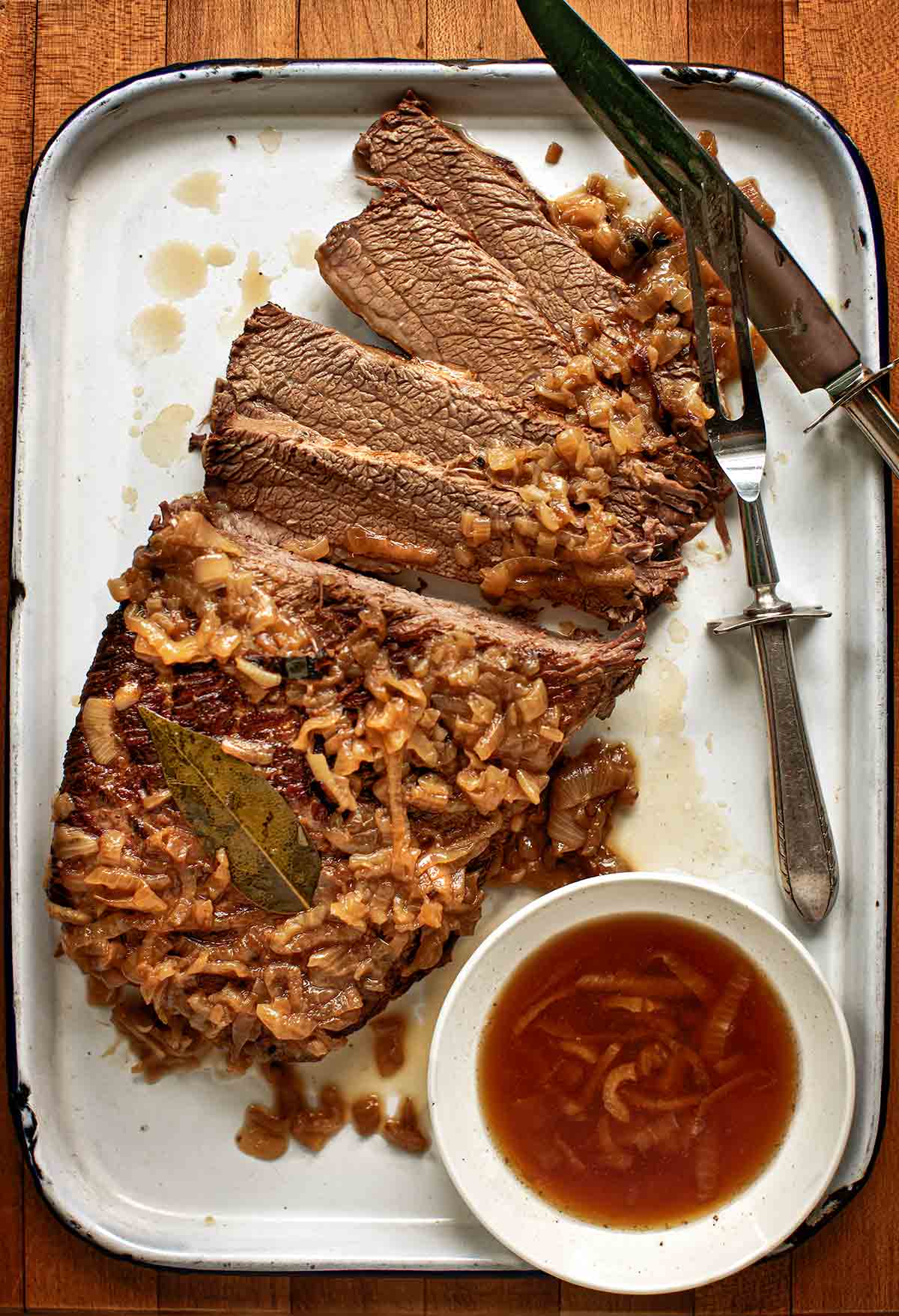
Edna Lewis was well known and loved for many reasons. Her spare prose. Her soulful recipes. Her kitchen frugality. Her endless wisdom—and not just as it pertains to culinary matters. All these attributes come together in this oven brisket recipe that’s simply flavored with onions and pan drippings.
Ms. Lewis relied on brisket as opposed to other cuts of meat as it possesses “a bit more taste than some of the other more expensive, better-known cuts.” She suggests you use whatever size brisket is available “so long as you purchase half as many onions as beef.”

Why Our Testers Loved This
The recipe testers had plenty of good things to say about this slow cooked tender baked brisket. They found it to be exceptionally easy to make and loved that it required a minimal number of inexpensive ingredients. Helen Doberstein described it as “an epic brisket worthy of the finest tables.”
Robin C. had this to say about the tender meat, “Edna Lewis’s oven brisket is perfection. It magically hits all the notes with the sparest of ingredients and seasoning, somehow achieving great depth of flavor.“
Notes on Ingredients
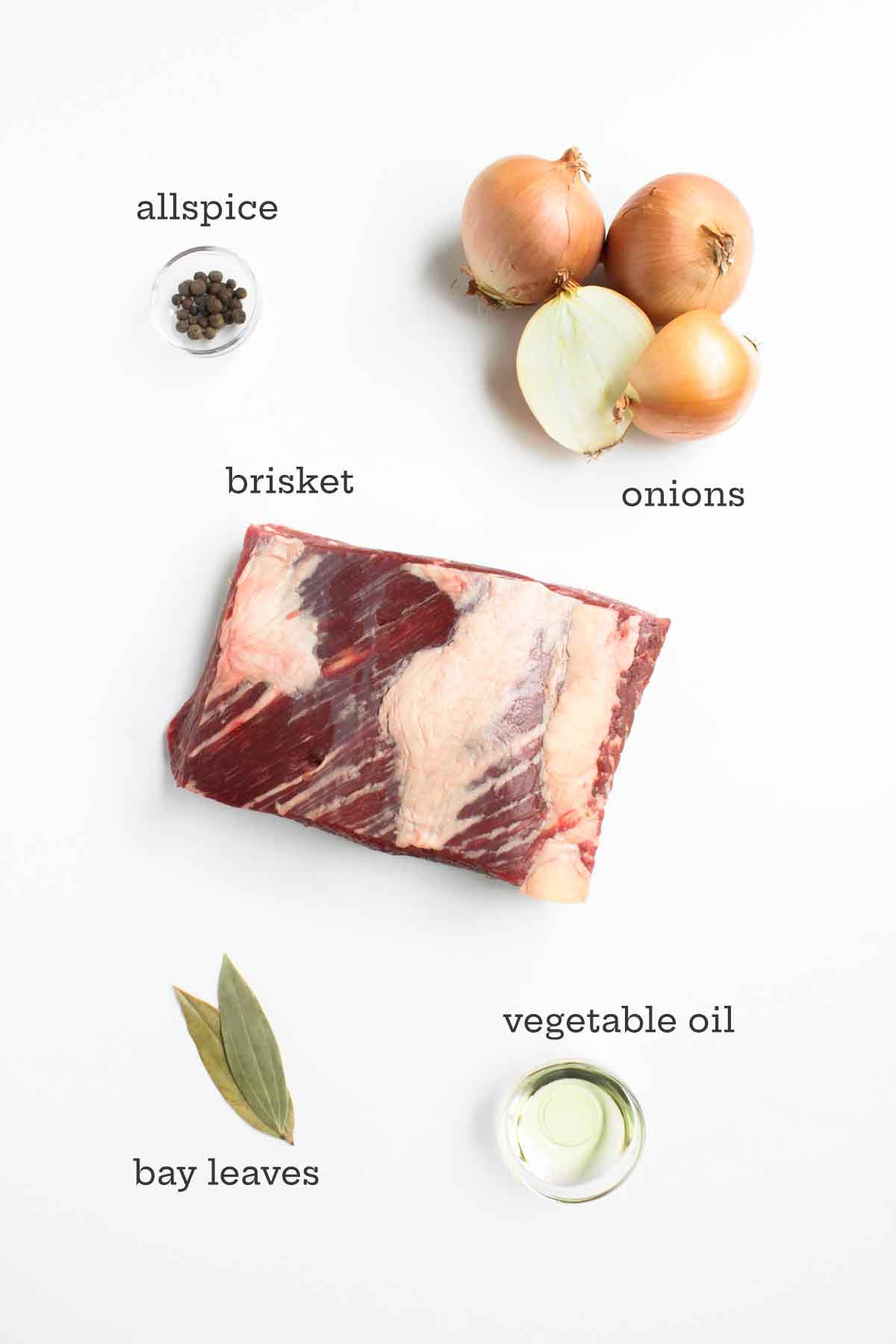
- Brisket–Look for flat-cut brisket, which has a uniform shape. This will cook more evenly than the fattier point cut.
- Onions–The onions should be sliced into approximately 1/4-inch-thick slices.
How to Make This Recipe
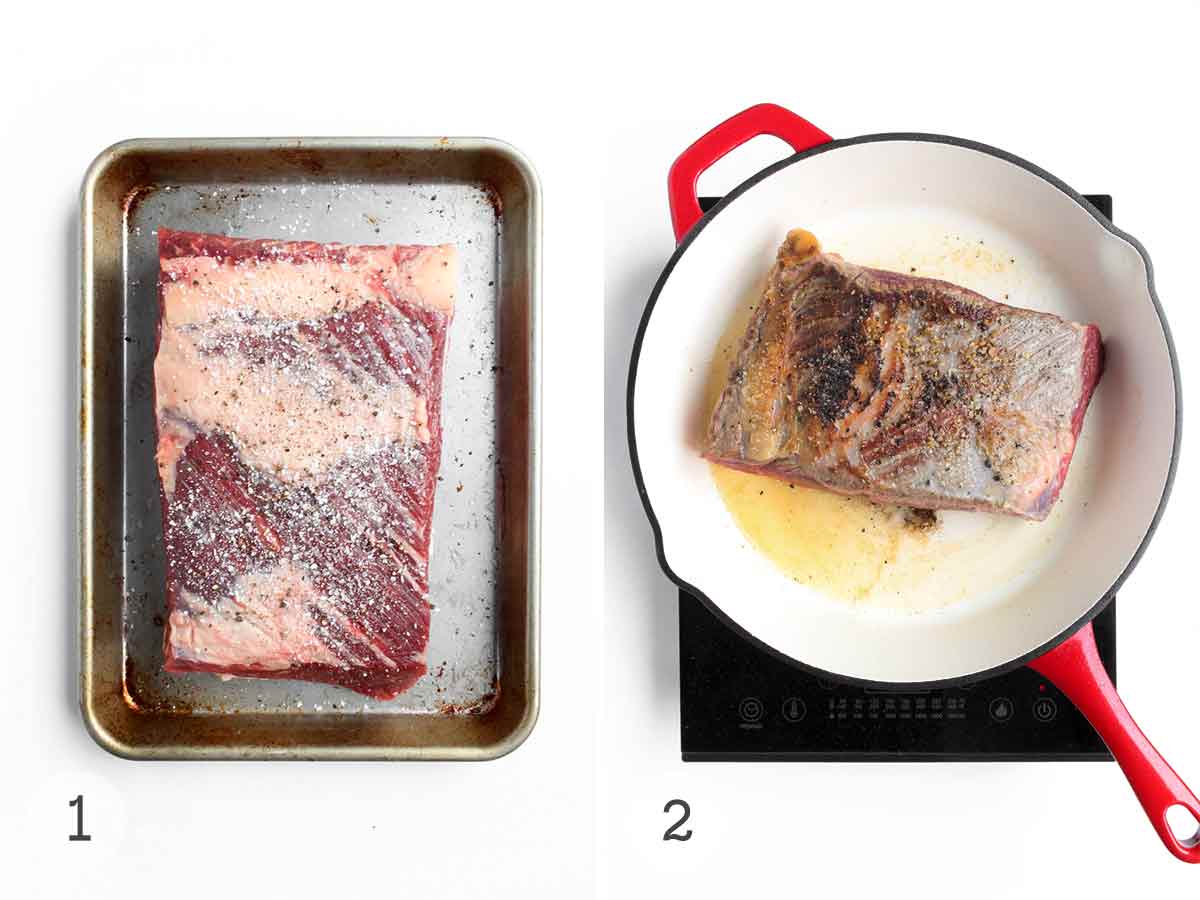
- Heat the oven to 400°F. Pat the brisket dry and season with salt and pepper.
- Heat a skillet over medium-high heat and slick it with oil. Add the brisket and sear on all sides until browned. Transfer to a Dutch oven.
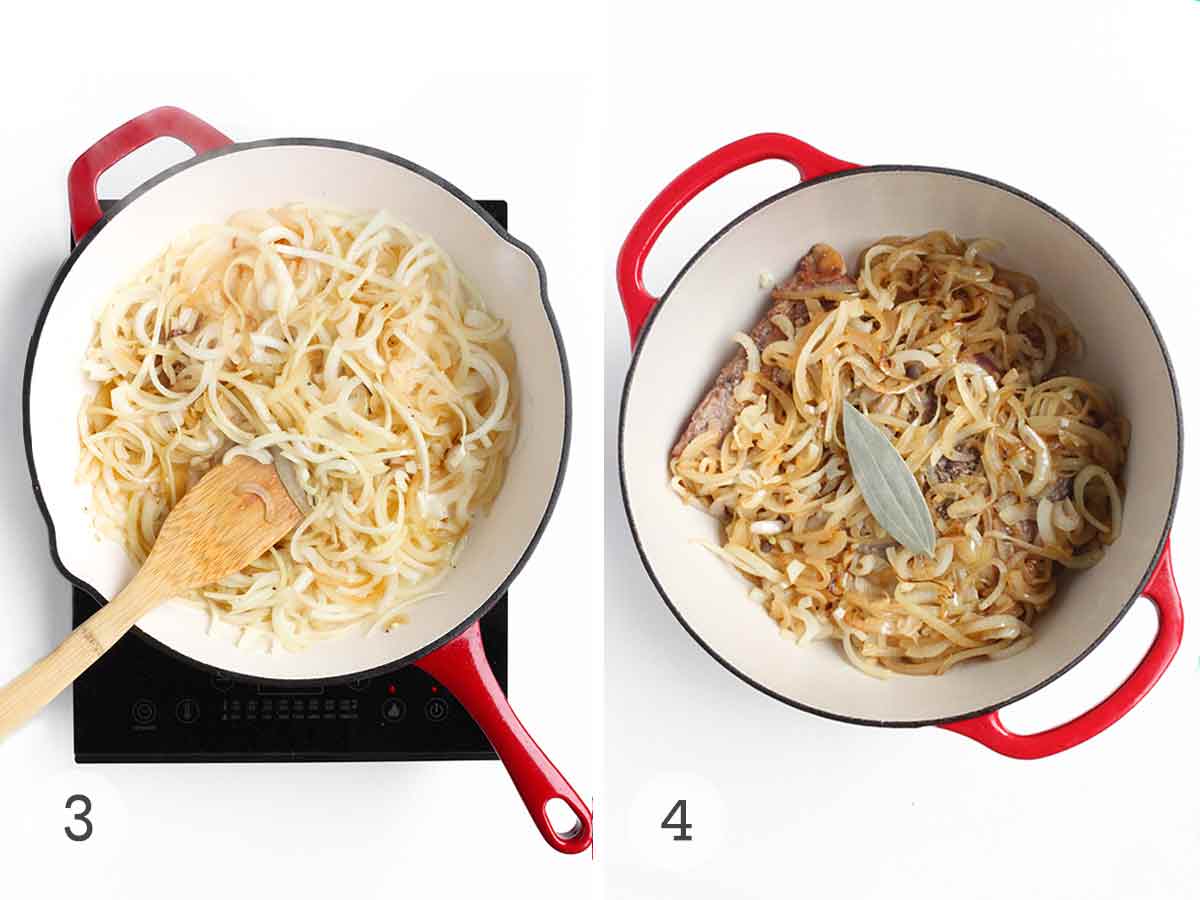
- Heat oil or butter in the same skillet and add the onions. Cook until browned and tender.
- Pile the onions on top of the brisket in the Dutch oven and add the allspice berries and bay leaf. Cover and cook for 15 minutes. Reduce oven temperature to 225°F and continue cooking until the brisket is tender.
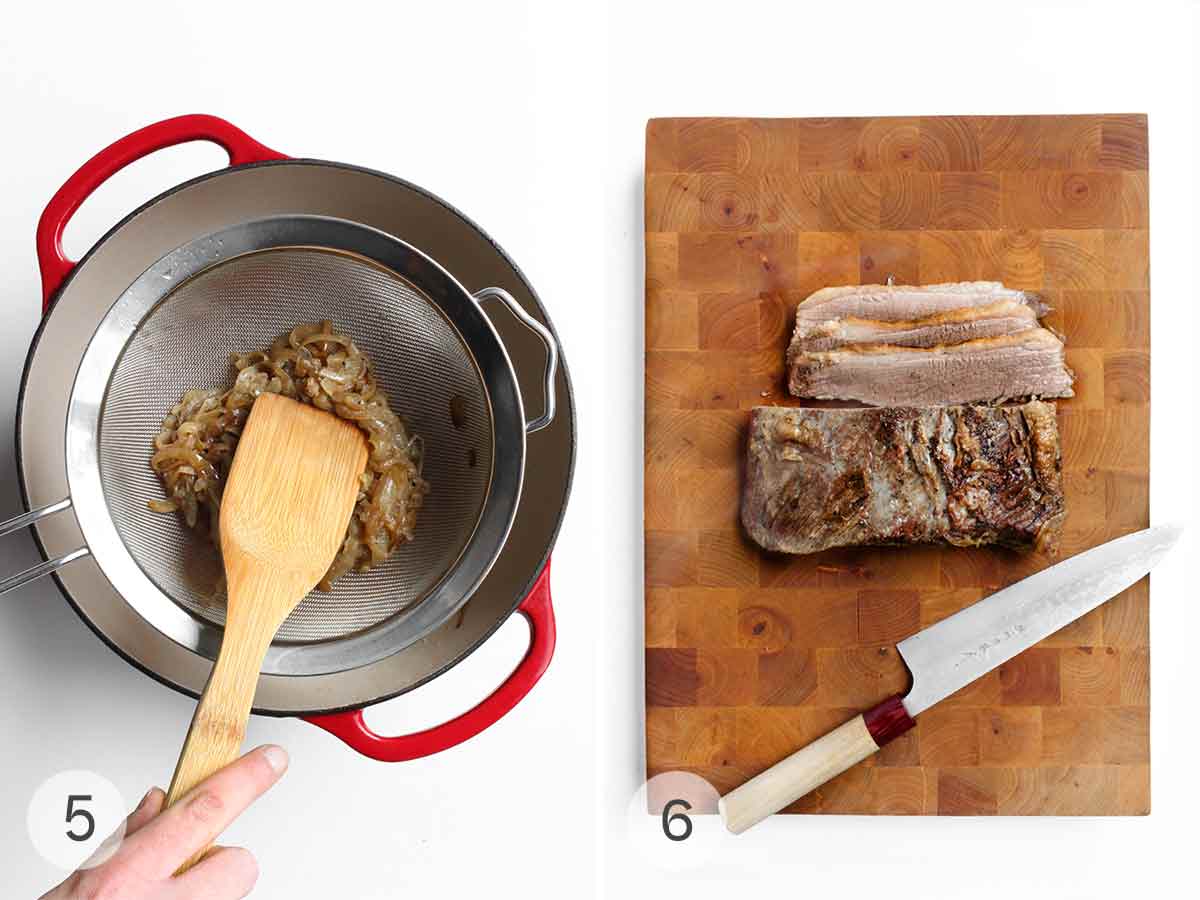
- Transfer the brisket to a cutting board to rest. Strain the onions through a sieve into the pan juices, pressing on them with a wooden spoon. Reduce the pan juices if desired.
- Slice the brisket and serve with pan juices.
Common Questions
To get tender brisket, it should be cooked to an internal temperature of 190°F to 200°F. Do not let the internal temperature exceed 210°F.
The brisket should be tender and easy to slice when it is done cooking. Plan on a total cooking time of about 1 hour per pound of meat.
You can serve this oven-baked brisket on a bun with a side of barbecue beans for a casual family-style gathering. For a more formal meal, serve it with Parmesan potato gratin and a side of fresh peas or braised carrots.
Pro Tips
- Leftover brisket can be stored in a sealed container in the refrigerator for up to 4 days. Leftovers make excellent sandwiches, can be stuffed into brisket tacos or can be used in steak quesadillas.
- To scale the beef brisket recipe, use 1/2 pound of onions for each pound of brisket. Plan to cook the meat for approximately 1 hour per pound.
- Brisket will shrink as it cooks. Purchase enough meat for 1/2 pound of uncooked brisket per person.
- For tender meat, always carve against the grain of the meat.
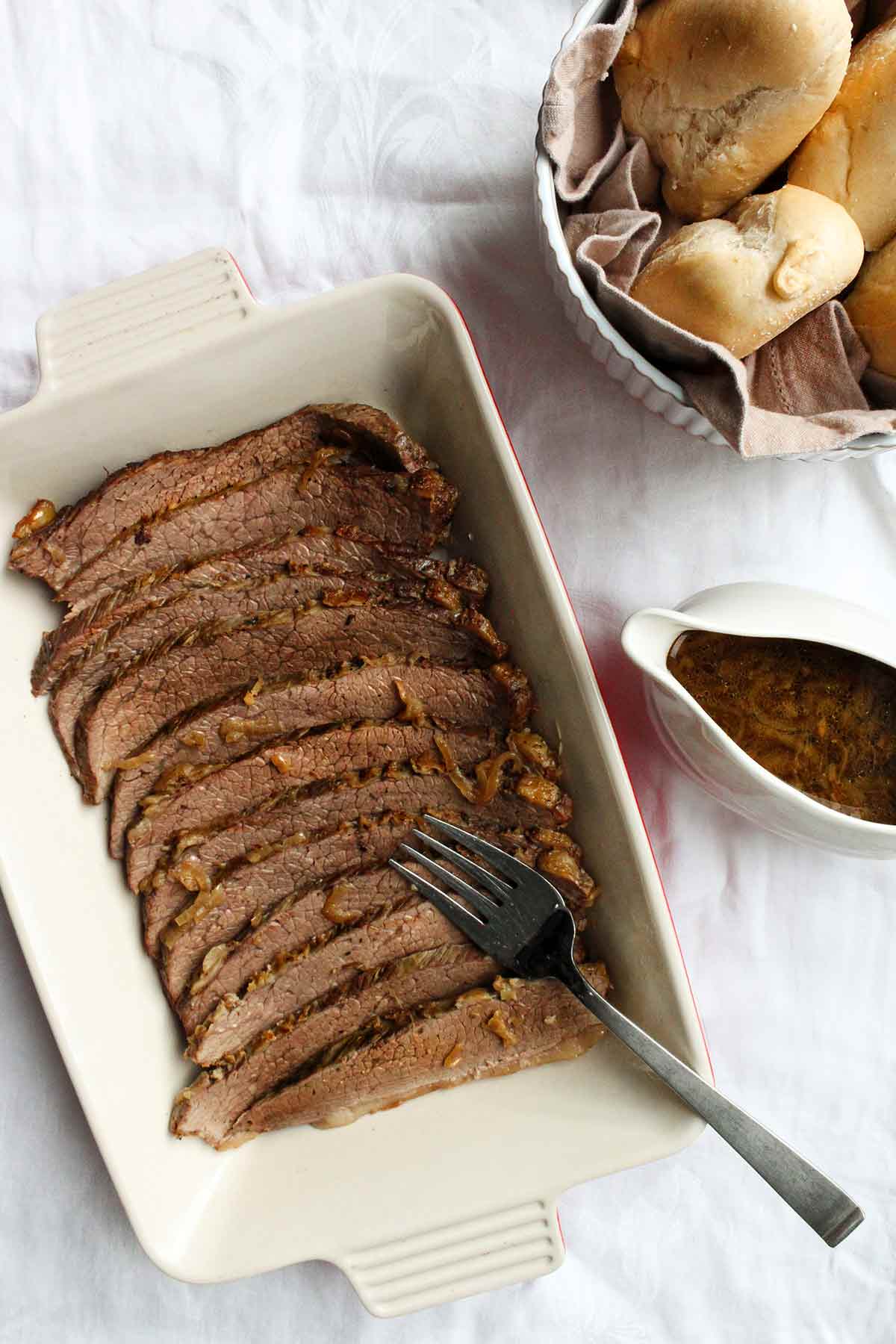
Write a Review
If you make this recipe, or any dish on LC, consider leaving a review, a star rating, and your best photo in the comments below. I love hearing from you.–David
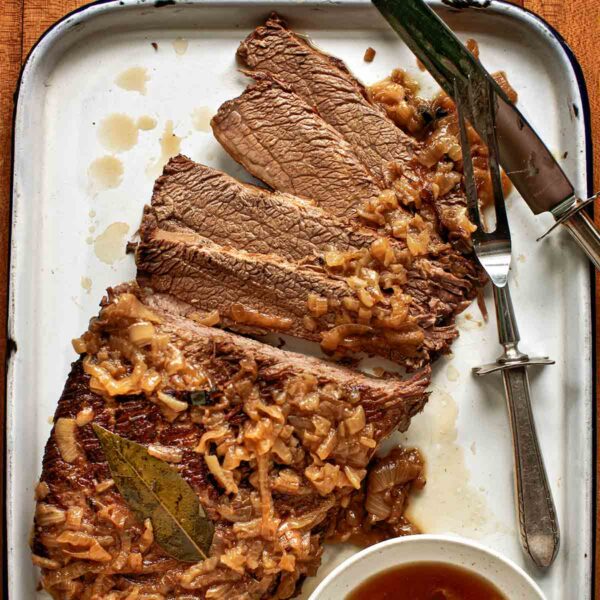
Edna Lewis’s Oven Brisket
Ingredients
- 3 pounds brisket
- Salt and freshly ground black pepper
- Vegetable or olive oil
- 1 tablespoon butter or vegetable or olive oil
- 1 1/2 pounds onions, peeled and sliced
- 4 whole allspice berries
- 1 bay leaf
Instructions
- Preheat the oven to 400°F (204°C).
- Pat the brisket dry and season it with salt and pepper to taste. Heat a skillet over medium-high heat, slick it with just a little oil, then add the brisket. Sear it well, turning until all sides are well-browned. Place the seared brisket in a heavy ovenproof pot or pan such as a Dutch oven.
- Wipe the skillet clean and then add the butter or oil and onions and return to medium-highish heat. Cook, stirring occasionally, until pretty well browned, 7 to 10 minutes.
- Sprinkle the brisket with pepper and then add the browned onions, allspice, and bay. Cover tightly and transfer to the oven for about 10 to 15 minutes. Reduce the heat to 225°F (107°C) and let cook, undisturbed, for 2 1/2 hours.
- Transfer the brisket to a cutting board to rest. Reserve the pan juices in the skillet.
- Spoon off any visible fat from surface of the juices and discard the bay leaf. Spoon the onions into a sieve or strainer, place it over the pan juices, and press the onions through the sieve, discarding any solids. If desired, strain again and reduce over medium heat for a few minutes. Taste and season the pan juices with salt and pepper to taste.
- Slice the brisket and serve with the pan juices.
Notes
-
- Leftovers and storage–Leftover brisket can be stored in a sealed container in the refrigerator for up to 4 days. Leftovers make excellent sandwiches, can be stuffed into brisket tacos or can be used in these steak quesadillas.
-
- Scaling–To scale the recipe, use 1/2 pound of onions for each pound of brisket. Plan to cook the meat for approximately 1 hour per pound.
-
- How much meat to buy–Brisket will shrink as it cooks. Purchase enough meat for 1/2 pound of uncooked brisket per person.
-
- Carving the brisket–For tender meat, always carve against the grain of the meat.
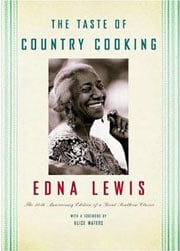
Nutrition
Nutrition information is automatically calculated, so should only be used as an approximation.
Recipe Testers’ Reviews
This oven brisket recipe reminds me of brisket I’d be served at a Louisiana or Texas BBQ stand. It’s a pretty easy recipe for those who don’t make a brisket very often too, as there is no need to deal with a smoker outdoors.
I trimmed off the fat cap so I had about 1/4 inch-thick fat on top of the brisket. I gave it a very heavy coating of an artisan smoked salt and some fresh ground pepper on both sides, then seared both sides and the edges to a nice brown with bit of a crust.
As the brisket rested and the onions were cooking, I placed the Dutch oven into my Breville Smart-oven to warm up to 400°F. The onions browned up pretty quickly, and when they were ready, I placed the brisket, fat side down, into the Dutch oven, and it gave off a nice sizzle as it hit the bottom of the cast iron.
I scattered the onions atop the meat, added the allspice berries and bay leaf and then sealed it with a bit of aluminum foil before placing the top on the Dutch oven. I used my Breville as I knew I could control the 225°F temperature much better than my normal oven.
When it was ready, it was tender and juicy. As I let the brisket rest I prepared the onion gravy (I reserved the onion for another use) and finished off the meal with some roasted veg. I stored it in the fridge with the remaining broth to keep it tender and avoid it drying out.
I had a nice steak, egg and cheese breakfast sandwich the next morning. And as I was really enjoying this brisket, I also had it for lunch! I melted some Monterey jack cheese on a tortilla, then added the brisket, topped with some horseradish sauce and a bit of romaine.
Edna Lewis’s oven brisket is perfection. It magically hits all the notes with the sparest of ingredients and seasoning, somehow achieving great depth of flavor. Ms Lewis gives us fork-tender brisket wizardry in this recipe.
I don’t think there is an easier introduction to cooking brisket than this recipe, and the results were enjoyed for several meals afterwards.
My brisket was just over 3 1/2 pounds, so I scaled my onions up to half that weight and the result could not be more pleasing. Using tongs, I made sure to sear the edges as well as the flat surfaces, and seared all to a nice brown. Spooning the rendered fat out, and wiping with a paper towel, I used the same Dutch oven for the onions and this way I captured any fond on the pan from both browning the meat and the onions, making sure to not scorch the onions.
When the brisket went into the oven, I placed a large round of parchment on top of the onions and meat, then the lid and after 15 minutes at the high temperature, lowered the oven to 225℉ and left it alone for 2 1/2 hours. The meat was tender yet firm (not falling apart), and after sieving the onions and removing more fat from the juices (a fat separator made this most straightforward), I reduced the sauce a bit and served.
That left a nice chunk for future meals and for two people we probably got 8-10 servings from this, a really good return on effort. Even though this is a simple method, it was worthwhile visiting my favourite butcher, and making it the best example we could.
Brisket doesn’t have to be expensive, but it can be a very satisfying meal worthy of Sunday dinner or a series of great meals. I don’t consider these bonus meals to be ‘leftover management’ as much as component cooking—I always count on future hash for instance, when considering cooking corned beef or other brisket.
There is something wonderful about a simple recipe that allows the beef to be the shining star of the meal. This is such a recipe. Basic ingredients, time and you have an epic brisket worthy of the finest tables.
Preparing the meat is simply pat dry, season, and brown. I was using a cast-iron Dutch oven so I removed the meat to a plate while I cooked the onions. The onions took 10 minutes to brown. Then it’s a matter of putting everything back into the Dutch oven and slow roasting for 2 1/2 hours. I must say, after about an hour, the aromas in the kitchen were mouth-watering.
While the roast was resting, I defatted the pan juices, discarded the bay and allspice berries, and removed the onions. I know the recipe says to discard the onions, but I have to wonder why. They were nicely browned and caramel-ly and delicious. I broke the rules and set them to the side to serve with the brisket for those who wanted some. After checking the juices for seasoning, we served the sliced brisket.
This recipe did not disappoint. This is brisket at its best, tender and full of flavour. The pan juices were delicious, as were the onions I’d put on the side. We had very little left over. I served this with a garlic mashed cauliflower and a mixed green salad. We got 6 servings. I don’t know if I’d make a brisket any other way now.
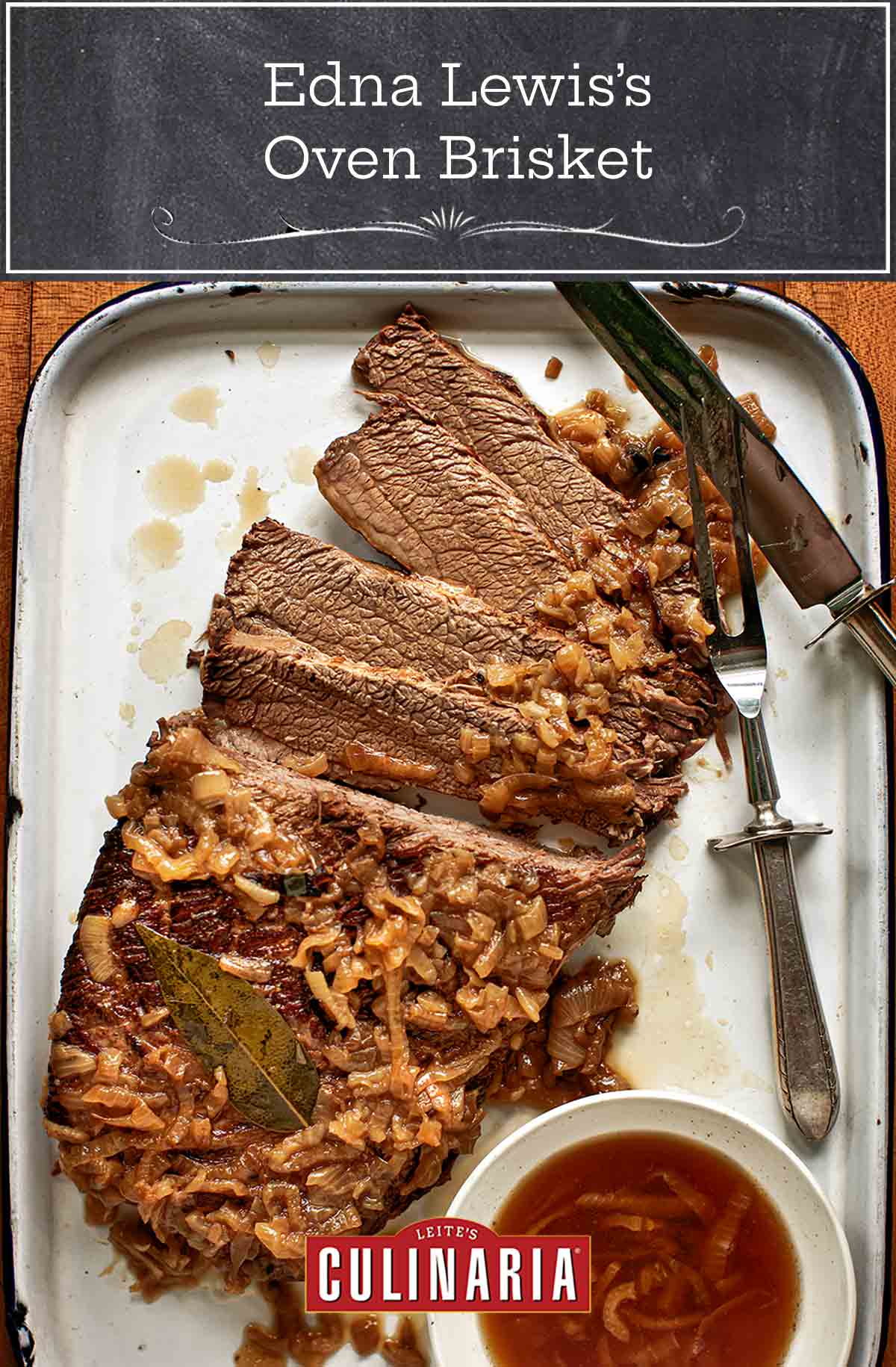
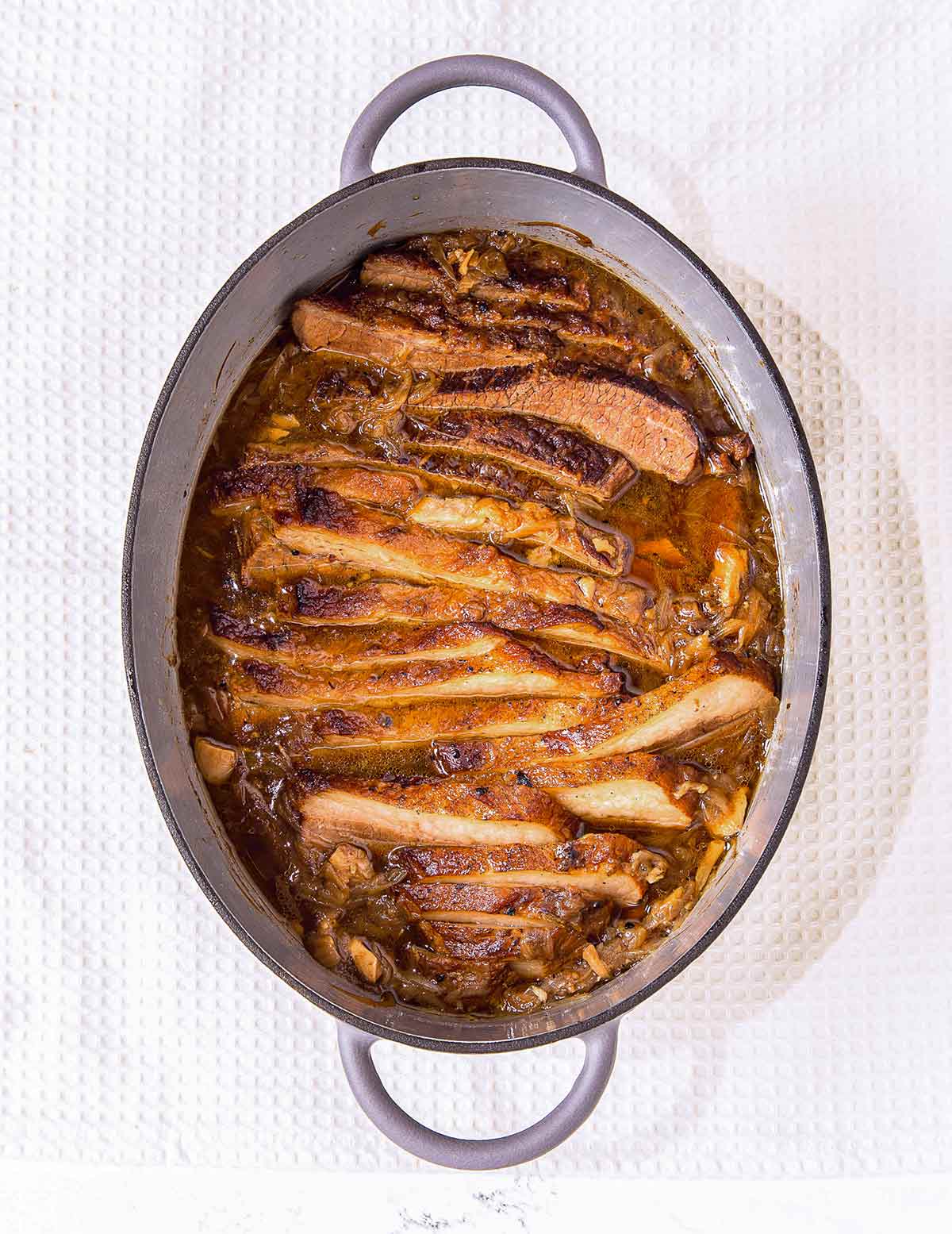
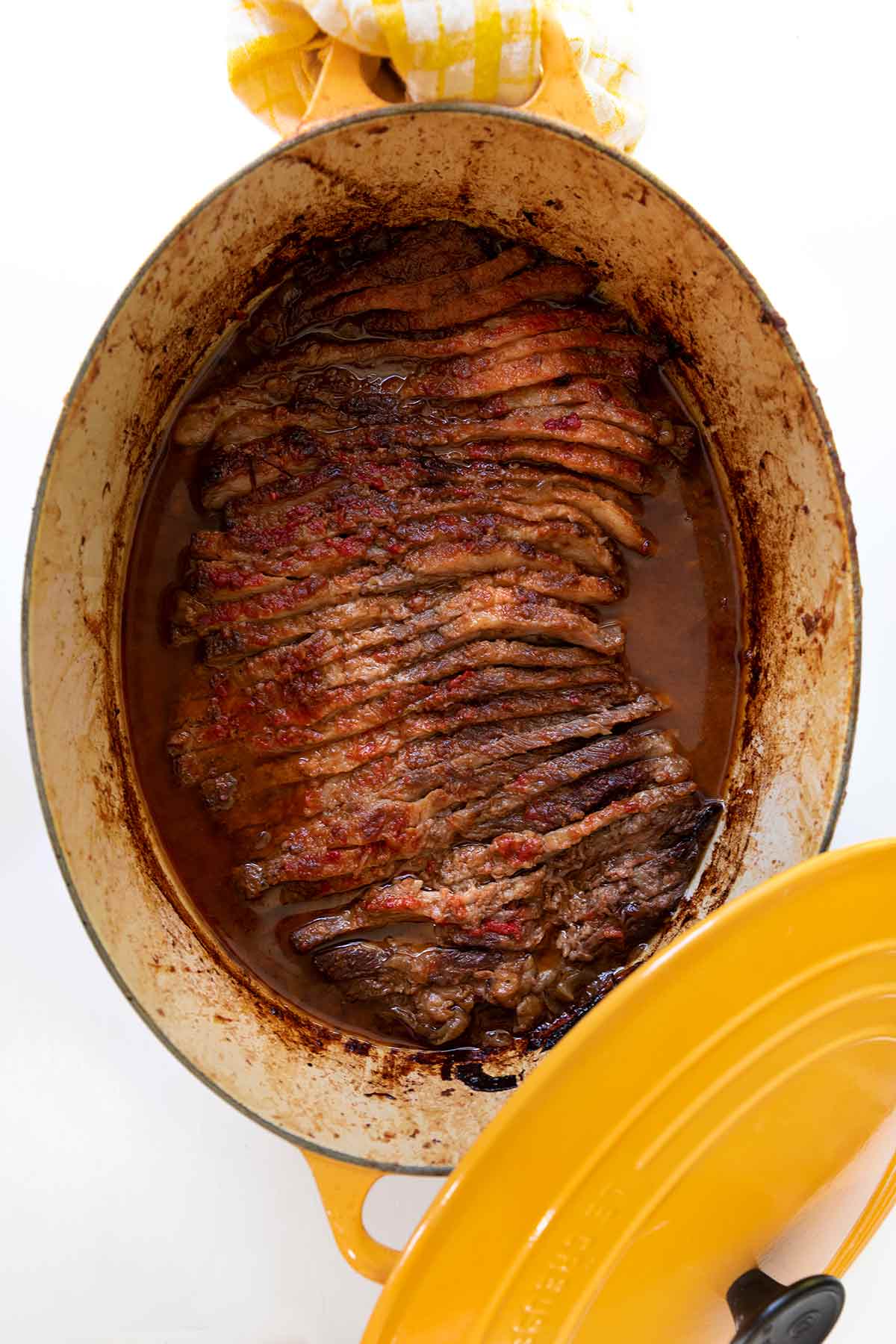














Can you give a detailed description of how to press the onions through a sieve, what size holes should it have? It seems you would have to use a fair amount of pressure, will the sieve hold up to that, and are pressing and scraping all around, which i would assume kind of grate the onion up to a mush. In the end, how much of the onion is getting through the sieve, 20%, 50% etc. ?
Thank you.
Todd, a sieve generally has a fine mesh, so you won’t get a lot of onion solids passing through it. Use the back of a spoon and apply firm pressure to push on them. You’re really just extracting any liquid to flavor your pan juices. After the long cooking period, the onions are very soft, so they will sort of press into a paste as you push them into the sieve.
Thanks for giving this recipe to me. I made it exactly as written. Perfect for the two of us. Delicious and even better the next day!
You’re welcome, Christine. I’m so happy that you enjoyed it and so appreciate you taking the time to comment.
How much time should I add for cooking a larger piece of brisket – proportional??
Hi Georgine, how much larger is your brisket?